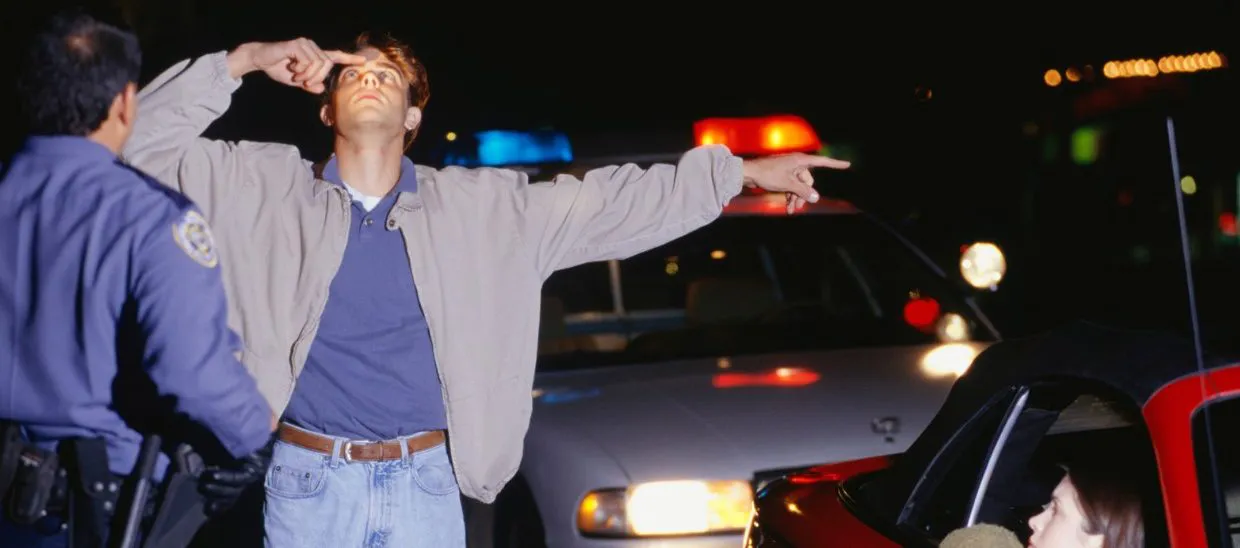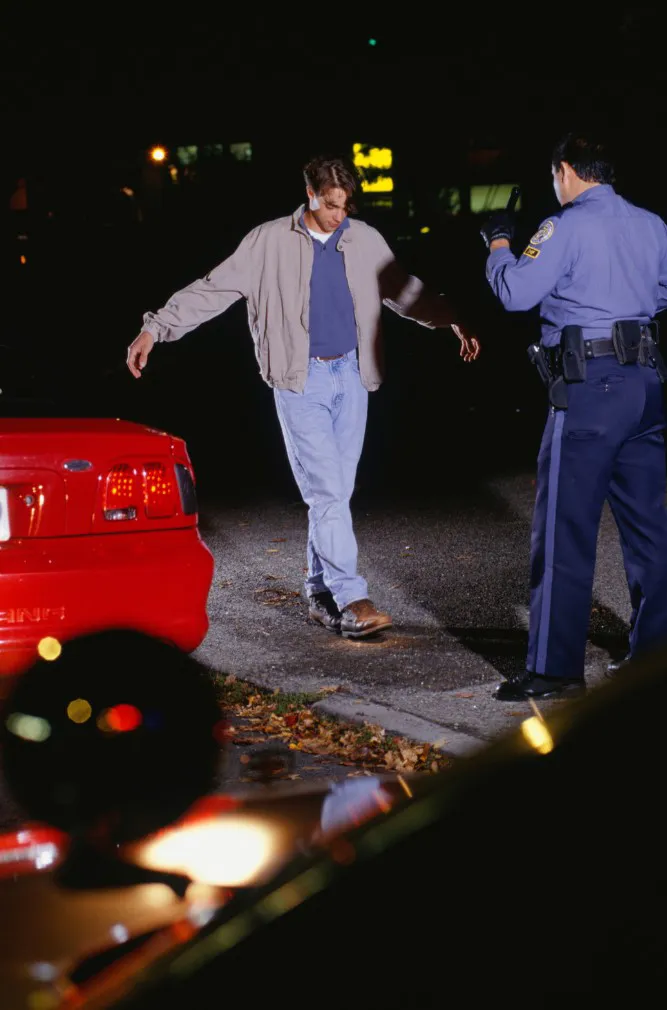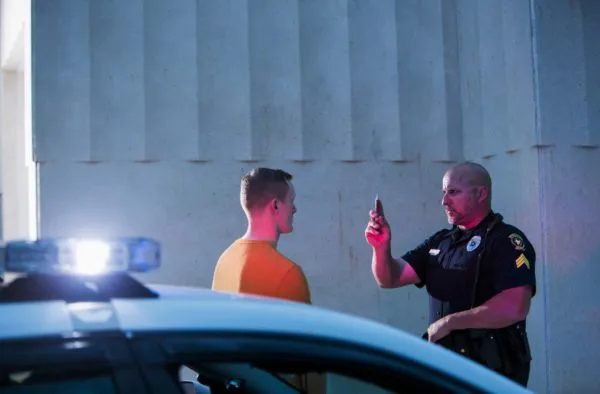The Field Sobriety Tests
Understanding the field sobriety tests and your rights is critical before being pulled over.
Find what you need to know to avoid or fight charges directly from the DWI Attorney’s mouth!
Understanding the 3 Standardized Field Sobriety Tests
The National Highway Traffic Safety Administration (NHTSA) has 3 standard field sobriety tests that they use to evaluate if someone is driving under the influence. These tests are the Horizontal Gaze Nystagmus Test, the Walk and Turn Test, and the One Leg Stand Test. The police may also ask you to blow into a roadside breathalyzer called an Alco-Sensor during the test.

Is There a Guaranteed Way to Pass a Field Sobriety Test?
There’s no surefire way to “ace” a field sobriety test since it is the police officer who gives the test and also decides if you pass or fail. The tests are subjective and rely heavily on the officer’s own judgment. However, there are some things you can do to boost your likelihood of passing.
Follow the Officer’s Instructions Carefully
Make sure you understand the instructions before you begin the test, and follow them exactly as they are given to you. It is okay to ask questions if you do not understand part of an instruction.
- Stay calm and focused: Nervousness and anxiety can affect your performance.
- Use good body mechanics: Keep your balance by standing up straight, looking straight ahead, and avoiding swaying or leaning.
- You will be instructed not to use your arms for balance: If you’re having trouble balancing, you should simply decline to do the tests.
- If you are going to have trouble with the tests you are likely better off simply declining to do them on the advice of counsel. Don’t try to “fake” your way through.
- Tell the Officer about any injuries and medical conditions. Injuries and certain health conditions can affect your performance on all the field sobriety tests. Officers cannot consider your issues when making decisions if you do not disclose them.
1- The Walk And Turn Test
The Walk and Turn Test is a field sobriety test used by law enforcement to determine if a person is under the influence of alcohol or drugs. The test involves an officer telling the suspect to walk in a straight line, heel-to-toe, for a specific number of steps, two sets of 9 steps total, turn on one foot in a series of small steps, and then walk back in the same manner, while counting each step out loud. The officer checks for certain signs that may mean the person is not okay to drive, like losing balance, swaying, or not being able to follow instructions.
During the test, an officer will look for the following 8 clues to determine if the person is impaired:
Instructional Phase:
- Not able to maintain balance while the officer is giving instructions.
- Starting too soon: The suspect starts walking before being told to do so.
Walking Phase:
- Stopping while walking: The suspect stops walking during the test.
- Unsteady balance: The suspect sways, stumbles, or displays unsteady balance.
- Unable to do heel-to-toe walk: The suspect does not touch toe to heel with each step.
- Stepping off the line: The suspect steps off the line while walking, even if the line is imaginary.
- Improper turning: The suspect is unable to turn as instructed or turns improperly by not turning with a series of small steps.
- Using arms for balance: The suspect uses their arms for balance during the test by raising them more than 6 inches.


2- The Horizontal Gaze Test
Police officers use a test called the Horizontal Gaze Nystagmus Test to see if someone has had too much alcohol or drugs. To do the test, the officer will ask the person to follow something with their eyes, like a pen or finger, to see if their eyes move in an uncontrolled side-to-side, up-and-down, or circular way called nystagmus. If their eyes do move in that way, it could mean they’re impaired. However, it’s important to know that this test isn’t foolproof and might not always accurately show a person’s level of impairment. The police will look for 6 clues (3 in each eye) during the test to decide if the person is impaired:
- Lack of smooth pursuit: The eyes do not follow a moving object smoothly and instead exhibit jerking movements.
- Nystagmus at maximum deviation: The involuntary eye jerking movements are most pronounced when the eyes are moved as far to the side as possible.
- The onset of nystagmus prior to 45 degrees: The involuntary eye jerking movements start before the eyes have been moved 45 degrees to the side.
3- The One-Leg Stand Test
The One-Leg Stand Test involves an officer telling the suspect to stand on one foot, with the other foot lifted off the ground, and to count out loud using 1,000s for 30 seconds. During the test, an officer will look for the following 4 clues to determine if the person is impaired:
- Swaying: Uncontrolled or excessive swaying from side to side.
- Using arms for balance: Using one’s arms to maintain balance or steady oneself.
- Hopping: Hopping on one foot to maintain balance.
- Putting the foot down: Putting the raised foot down to maintain balance.
The results of these tests, along with the other two standard field sobriety tests, can be used as evidence to see if the person is too impaired to drive.
Why Field Sobriety Tests Are Set Up To Fail
Will Field Sobriety Tests Work on THC?
Improper Counting
Improper counting will likely be considered a non-standard clue that a driver is impaired. An officer could say it indicates an inability to follow instructions.
If a driver fails to count properly, such as skipping numbers or counting without using 1,000s, it can indicate that the driver is impaired and may be unable to react properly or make quick decisions. The officer may also interpret improper counting as a sign of nervousness or confusion, which can further support their suspicion of impairment. Finally, if a driver’s stop is recorded via body camera, it will be much more difficult for them to convince a prosecutor or judge that they were not impaired if they are unable to perform simple tasks like counting or reciting the alphabet.
Contact Us
It’s important to remember that field sobriety tests are not always accurate and even if you fail the tests, it doesn’t mean that you have no defense. Field sobriety tests must be administered in a standardized manner as instructed by the NHTSA training manual. The results of field sobriety tests not conducted in the proper manner should be invalidated and challenged in court. If successful, the results of your official breathalyzer test or blood test, whichever test you were given to determine your official BAC, will likely be suppressed.
If you are arrested and charged with DWI, you should consult with an experienced attorney who has successfully challenged the legitimacy and accuracy of pre-arrest field sobriety tests. Contact us to discuss your legal options and get started on your defense right away.
With 3 convenient Offices in the Triad Area, we are only minutes away! Now accepting DWI cases in Winston-Salem and Greensboro, North Carolina.
